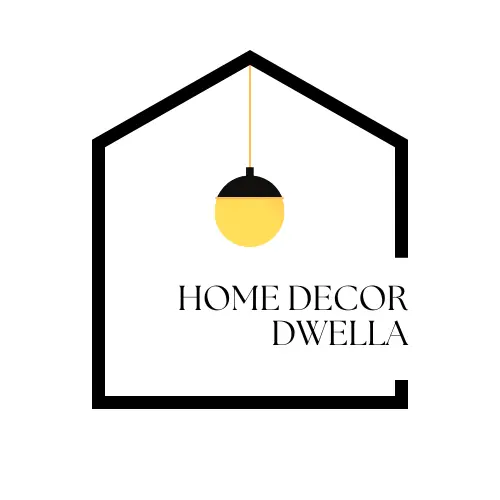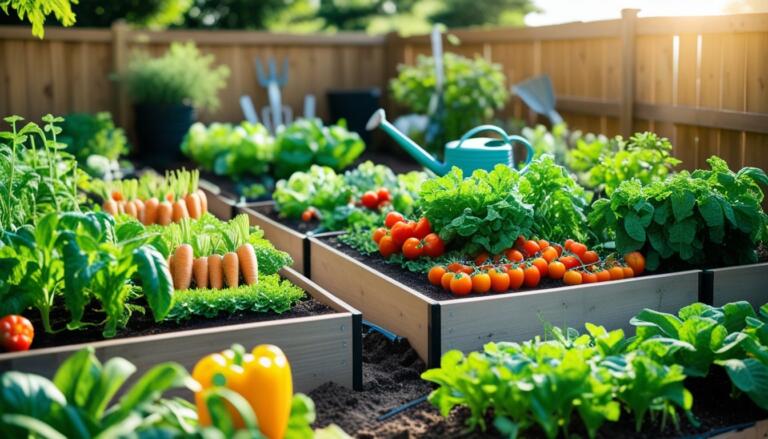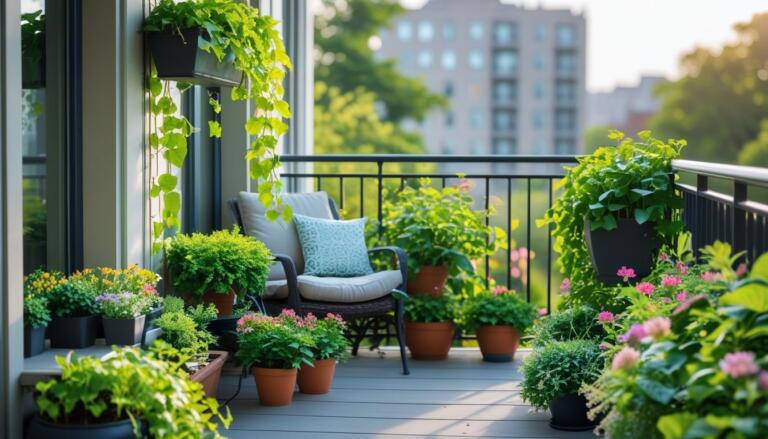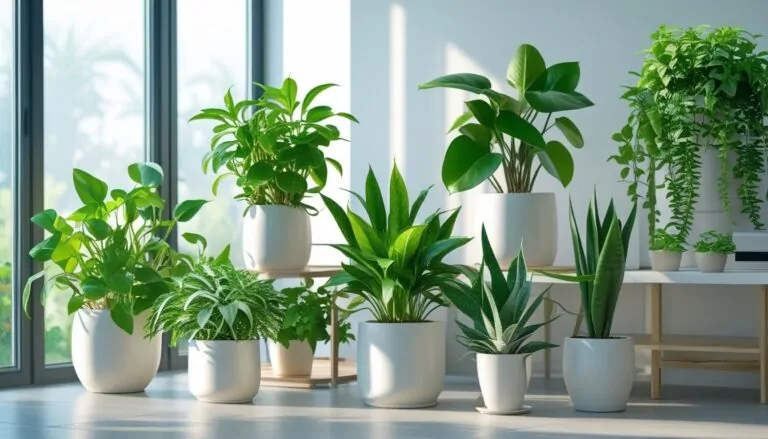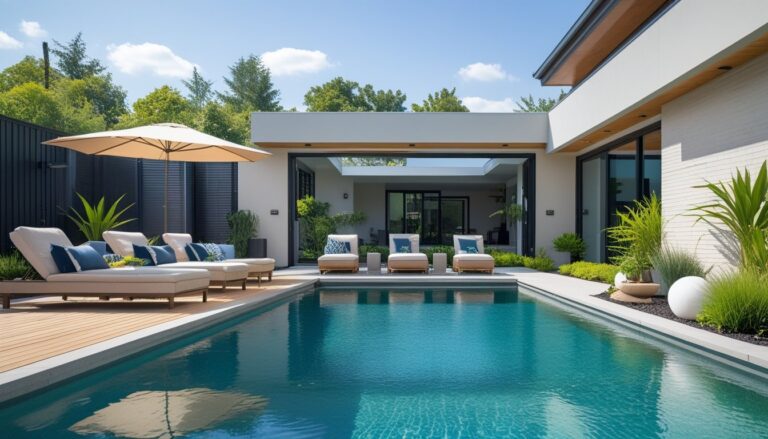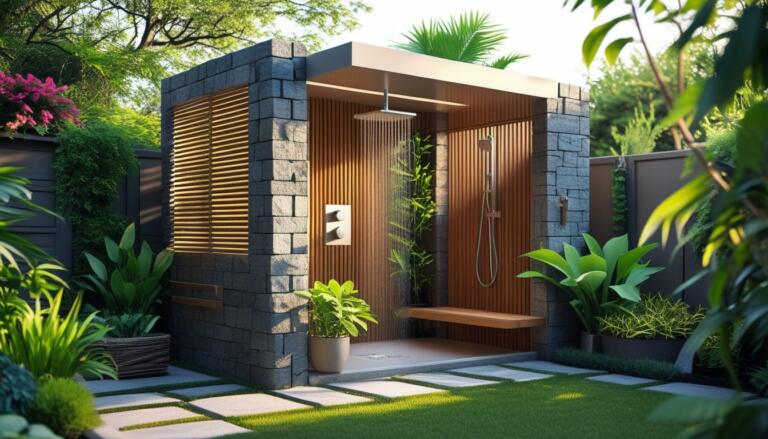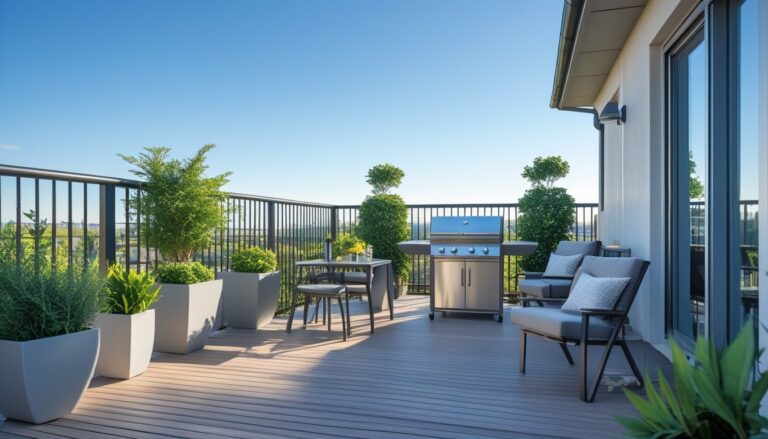7 Terrace Garden Design Ideas for Stylish and Functional Outdoor Spaces
A terrace garden is a practical way to add green space to homes, especially in urban areas where outdoor space is limited. It can turn a simple terrace into a relaxing or productive area by using smart design choices.
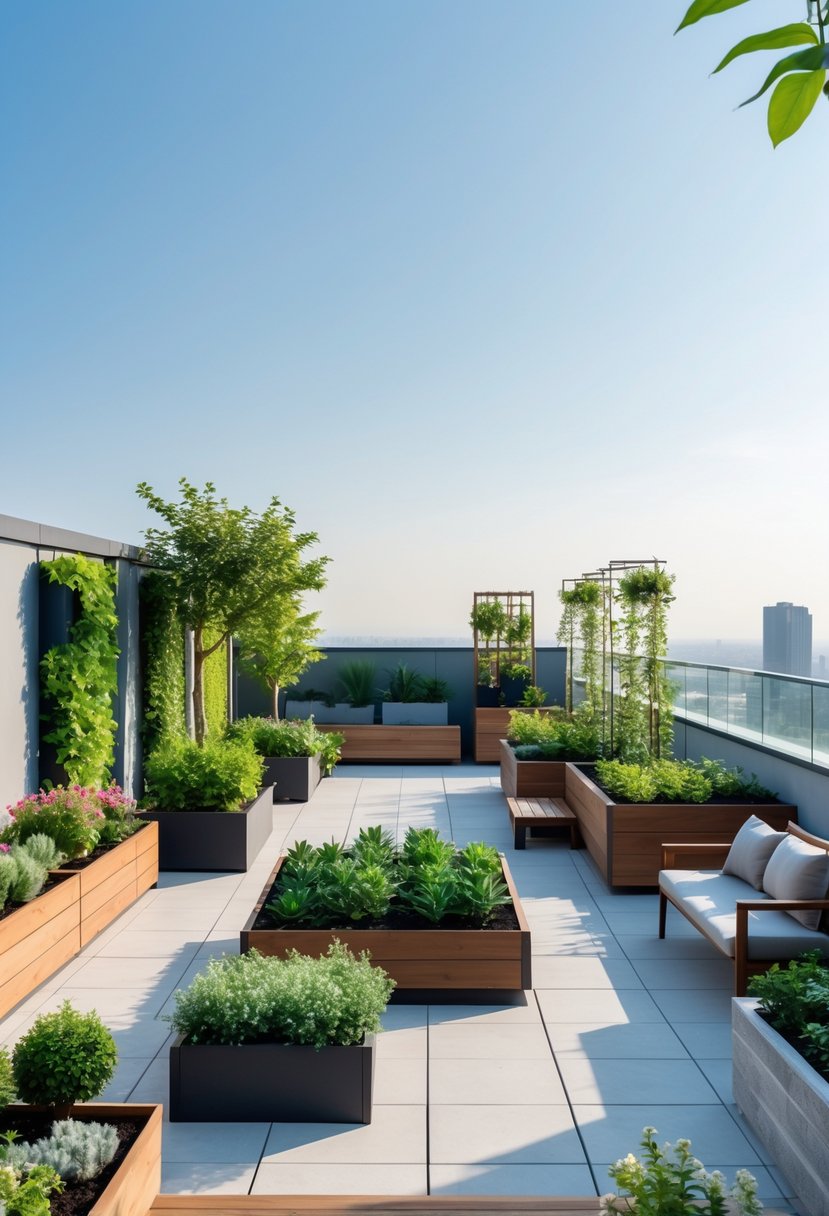
This article offers seven garden design ideas to help people make the most of their terrace space. These ideas focus on creating functional and attractive outdoor areas that suit different needs and preferences.
1) Use vertical gardens to maximize space and add greenery.
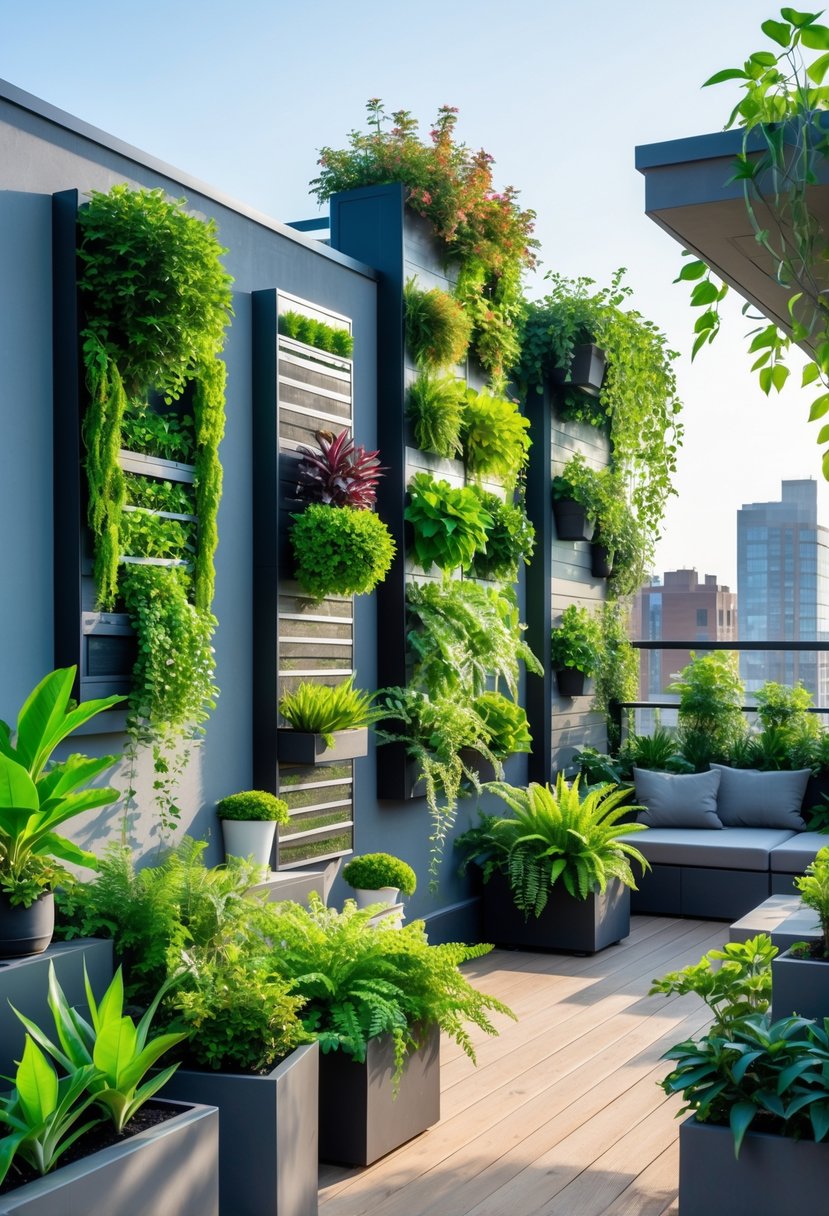
Vertical gardens help make the most of limited terrace space. They allow plants to grow upwards on walls, fences, or railings. This method adds greenery without taking up floor area.
Using hanging planters or wall-mounted holders can create a vibrant look. It keeps the terrace neat and offers room for more plants.
2) Incorporate colorful potted plants to brighten your terrace.
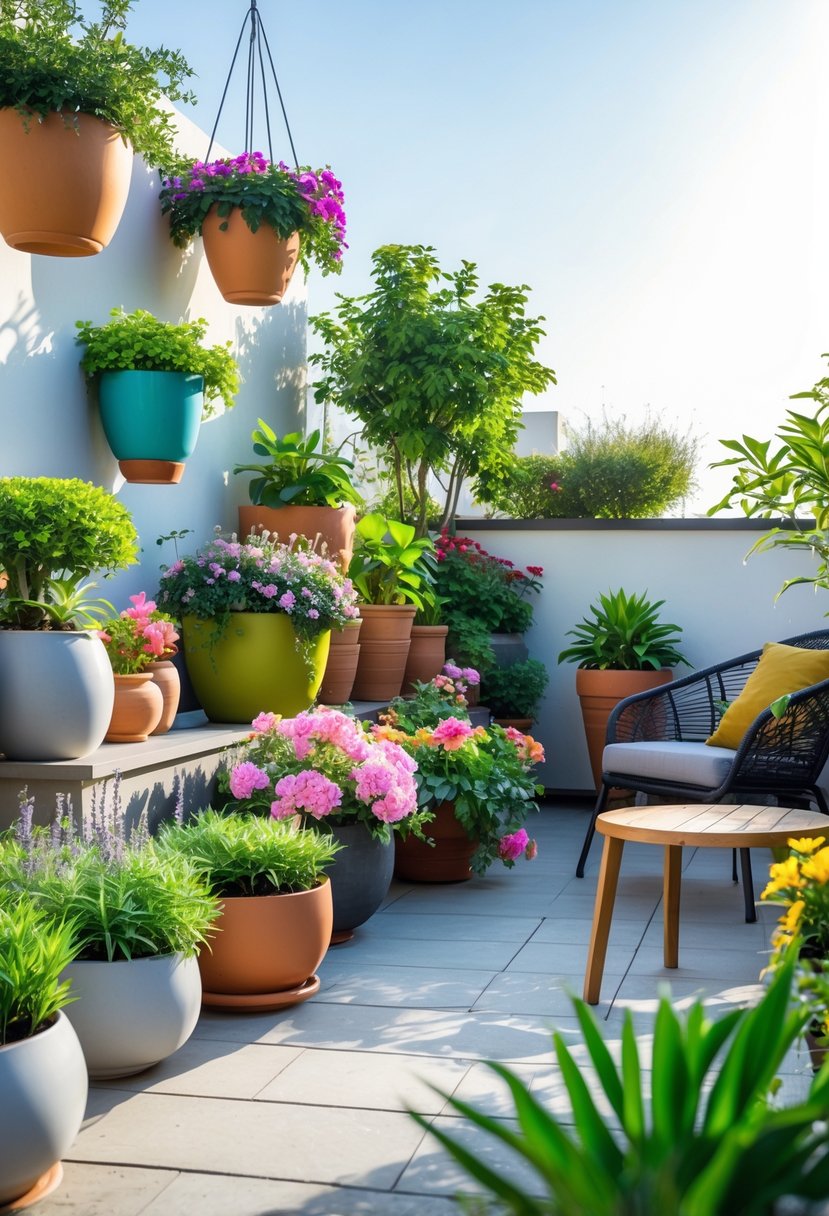
Colorful potted plants add life and charm to any terrace. They offer an easy way to introduce vibrant hues without major changes.
Choosing seasonal flowers helps keep the space fresh and inviting. Changing plants for each season ensures continuous color and interest.
3) Install raised garden beds for vegetables and herbs.
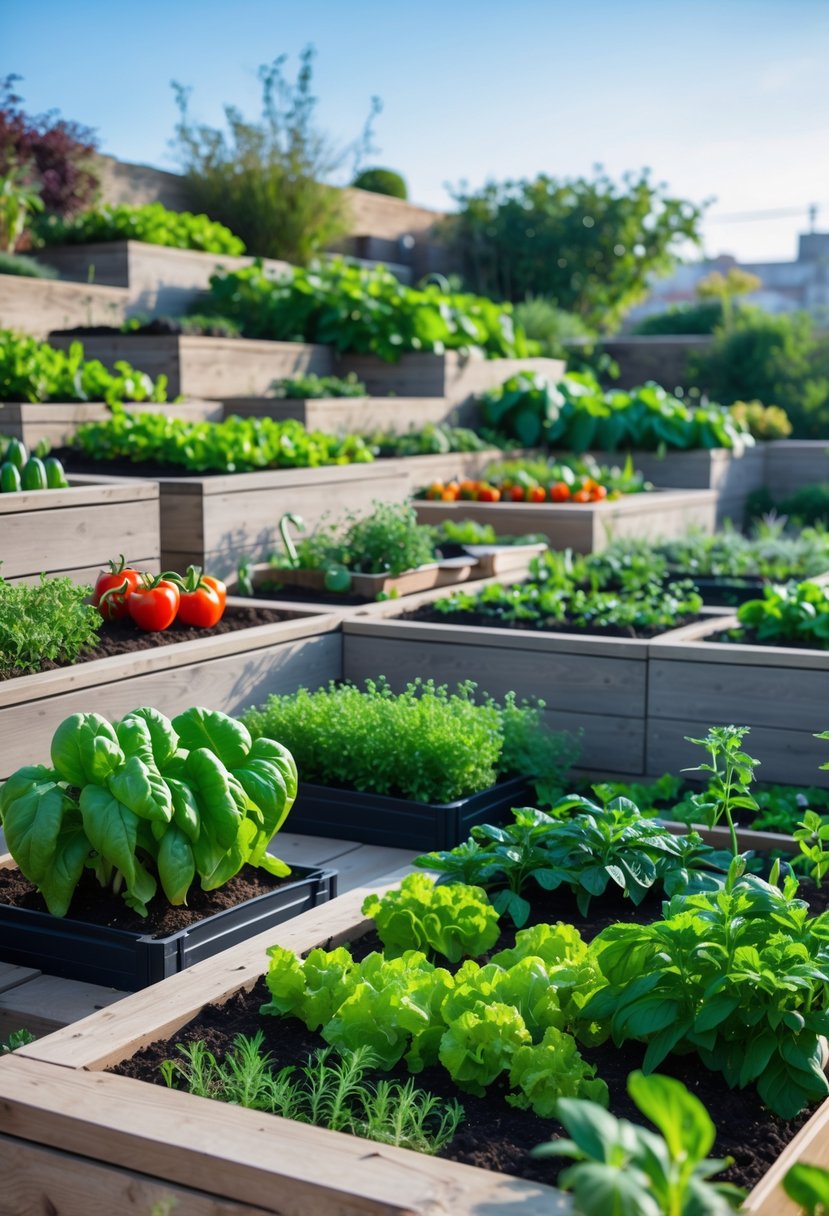
Raised garden beds make growing vegetables and herbs easier and more organized. They improve soil control and drainage, which helps plants grow better.
They also save space, making them ideal for terraces. Raised beds are easier to reach, reducing strain during planting and maintenance.
4) Add comfortable outdoor seating for relaxation
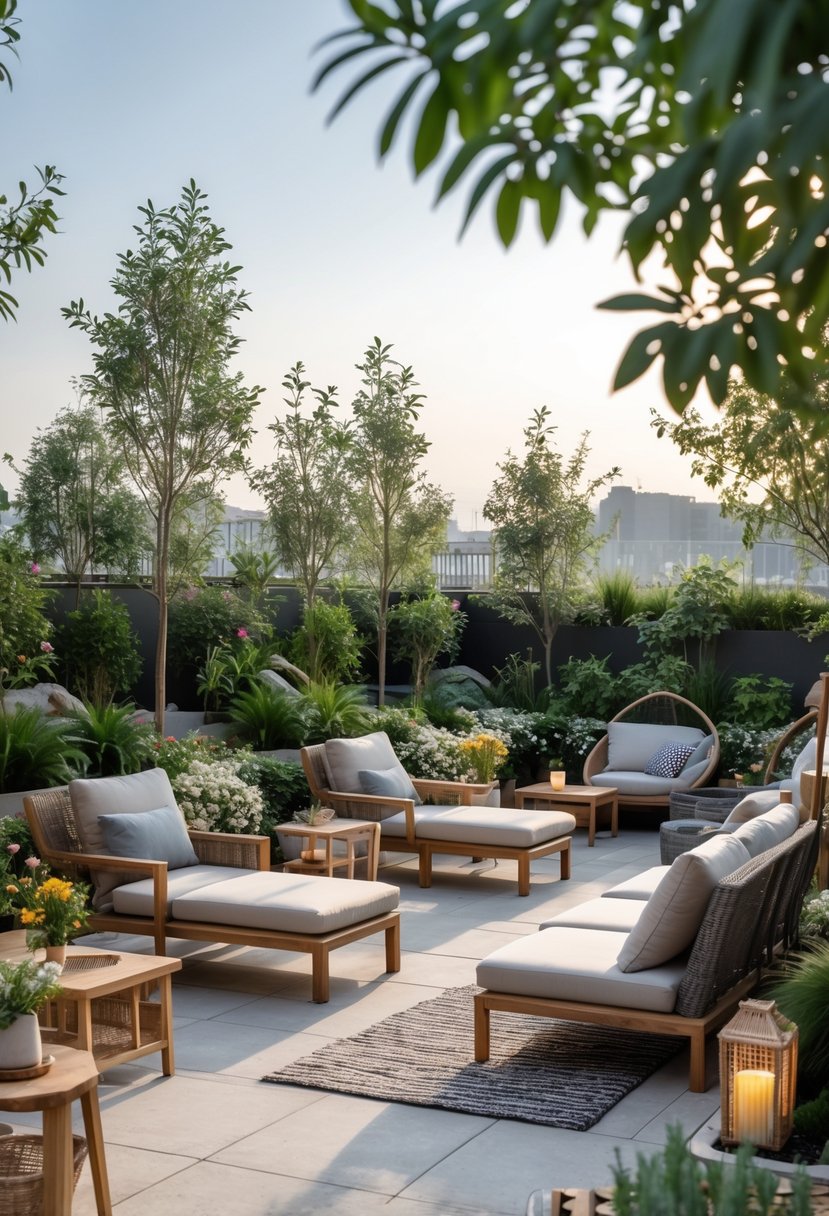
Comfortable seating is key to a relaxing terrace garden. Soft cushions and durable outdoor furniture make the space inviting. Options like sofas, bean bags, or hammocks provide different ways to sit and unwind.
Adding an outdoor rug can define the area and add warmth. Blankets and throw pillows make the spot cozier, especially when evenings are cool.
5) Use trellises to support climbing plants and create privacy
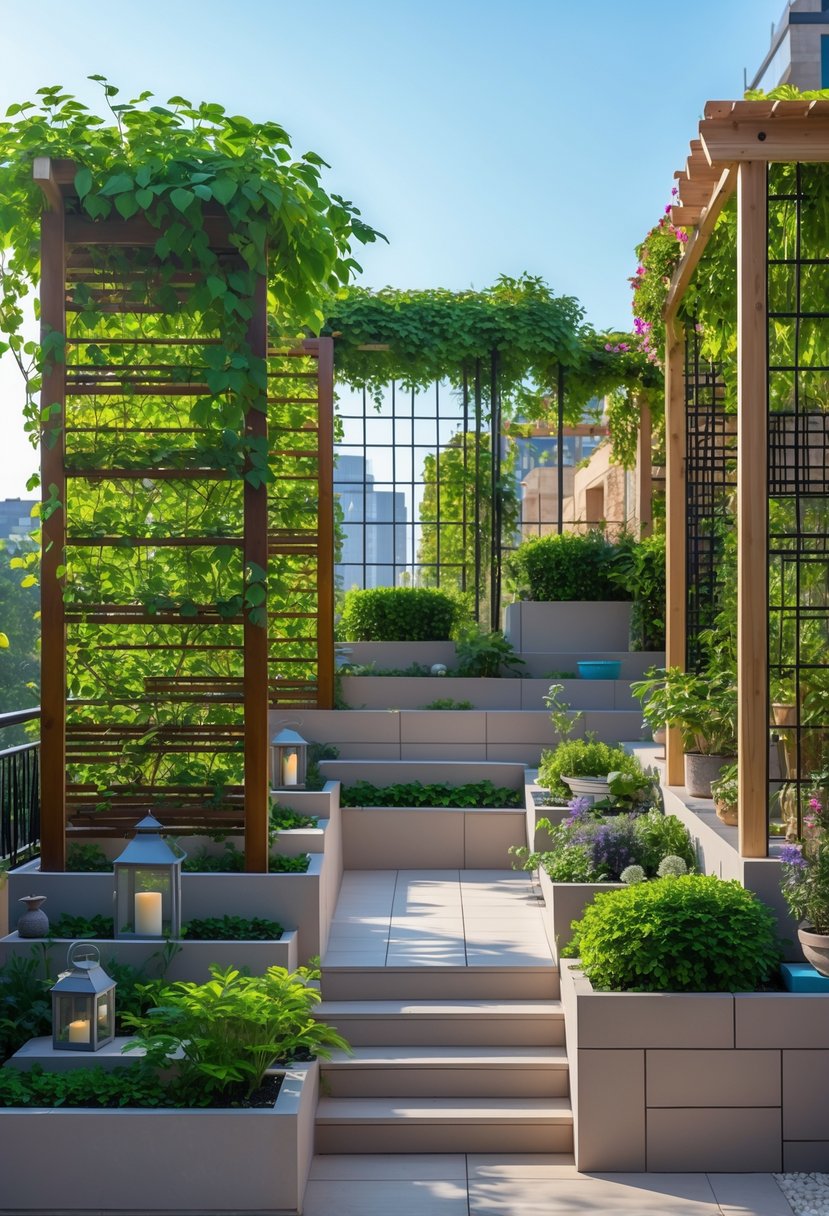
Trellises provide strong support for climbing plants like ivy, roses, or vines. They help plants grow upward, saving space on a terrace. Trellises can also act as privacy screens, blocking views from neighbors or streets. Using trellises makes a garden look neat and structured.
6) Incorporate ambient lighting to enhance evening use
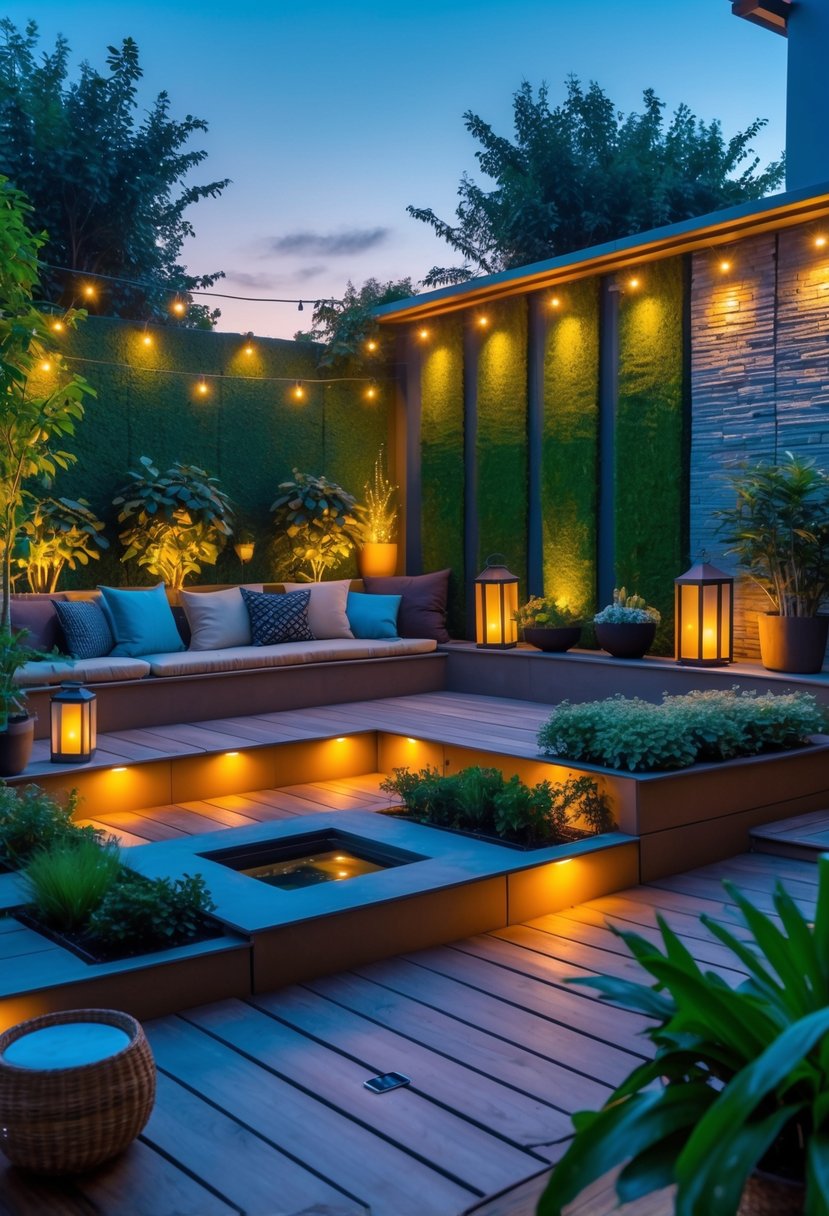
Ambient lighting helps make the terrace usable after dark. String lights or lanterns add a warm and inviting glow.
Solar-powered lights are a good eco-friendly option. They provide soft illumination without extra wiring.
This lighting creates a calm atmosphere for relaxing or socializing. It also highlights plants and pathways safely.
7) Use weather-resistant furniture for durability
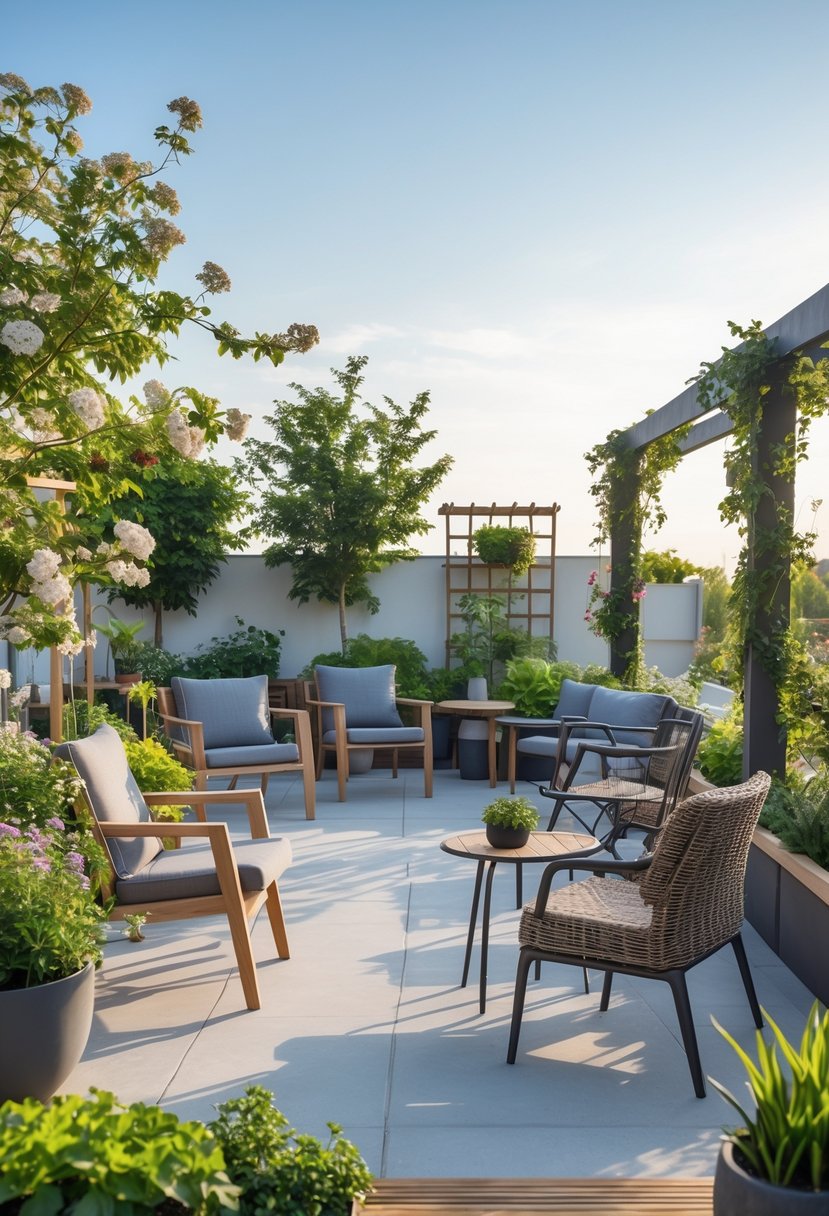
They should choose furniture made from materials like waterproof wood, metal, or plastic. This helps the furniture last longer outdoors.
Weather-resistant cushions and fabrics also protect against rain and sun damage. This keeps the terrace comfortable and low maintenance.
Key Considerations for Terrace Garden Design
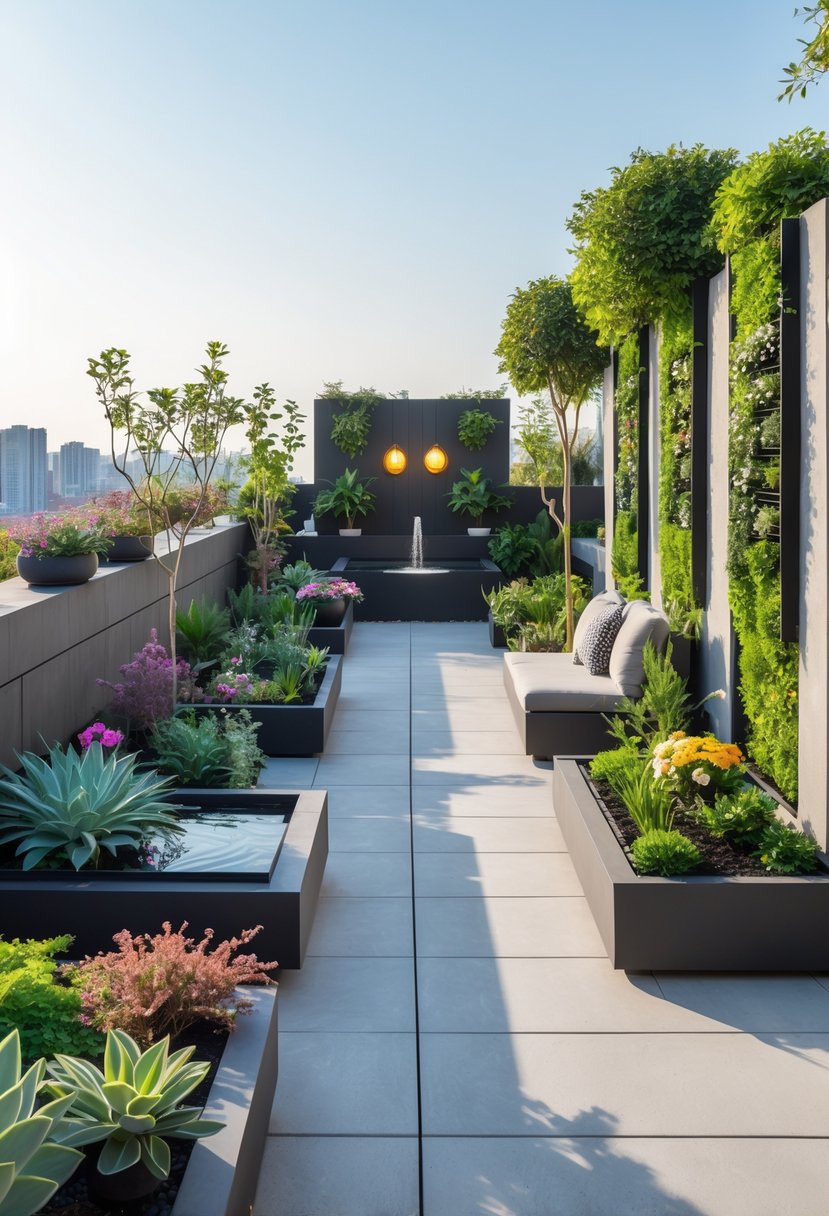
Designing a terrace garden requires careful attention to space and the right soil setup. Proper planning helps maximize limited areas, while good soil and drainage support healthy plants. Both elements are essential for a successful and lasting garden.
Space Assessment and Planning
Measuring the terrace area accurately is the first step. It helps identify usable space for planting, seating, and pathways. Designers should note sunlight patterns throughout the day to determine which areas get full sun, partial shade, or full shade.
Using vertical space with shelves or trellises can increase planting options without crowding. Creating distinct zones for different purposes, such as a relaxing corner or a vegetable patch, adds function and style.
It is important to choose lightweight containers and compact plants if the terrace has a weight limit. Planning for easy access and movement avoids cramped spaces and ensures maintenance is easier.
Soil and Drainage Solutions
Terrace gardens need soil that drains well to avoid water buildup and root rot. Using a lightweight soil mix with organic matter, perlite, or vermiculite improves drainage and aeration.
Installing a reliable drainage system is critical. Adding a layer of gravel or small stones beneath planters lets excess water flow away. Checking for proper slope on the surface also helps prevent water pooling.
Regular soil checks and adding compost can maintain fertility. Since container soil dries faster, frequent watering based on plant needs is necessary, but overwatering must be avoided to protect plant roots.
Enhancing Aesthetics and Functionality
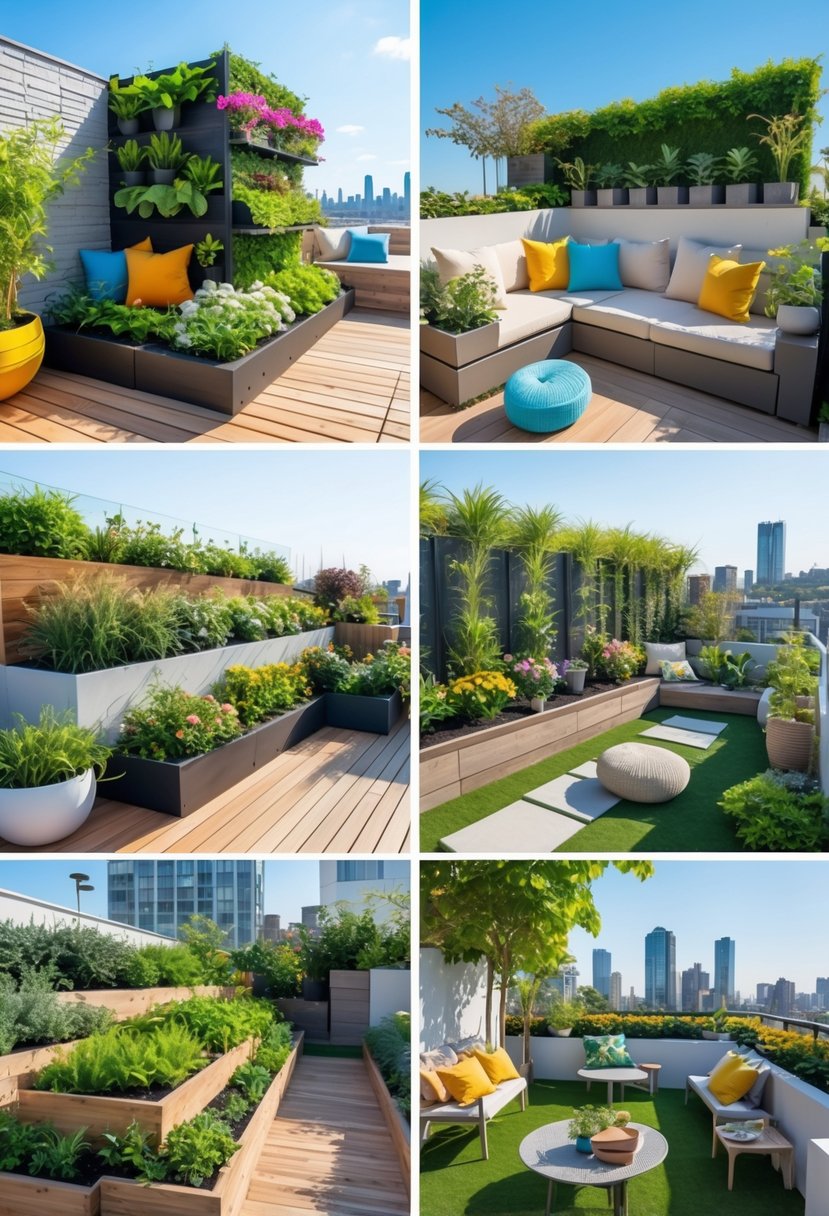
A terrace garden should be both beautiful and practical. Thoughtful lighting and the right plants improve the space’s look and usability. They make the garden welcoming at any time and ensure plants grow well in the outdoor environment.
Lighting Options for Terrace Gardens
Proper lighting extends the use of a terrace garden into the evening hours. LED string lights are popular because they provide soft, warm light and use little energy. Solar-powered garden lights are another good choice since they charge during the day and turn on automatically at night.
Spotlights can highlight key features like plants or seating areas. Using dimmable lights lets people adjust brightness for different moods or activities. Waterproof, weather-resistant fixtures are important to avoid damage from rain or humidity.
Lighting placed along pathways or around seating improves safety. Combining functional and decorative lights helps balance beauty with practicality in the garden.
Selecting Suitable Plant Varieties
Choosing the right plants affects both aesthetics and garden care. Plants that thrive in the terrace’s light conditions reduce maintenance and improve health.
Succulents and cacti work well for sunny spots because they need little water. Shade-tolerant ferns or ivy are better for shaded corners. Using a mix of tall and low-growing plants adds depth and texture.
Consider plants with different blooming times to keep the garden colorful year-round. Using pots with good drainage and high-quality soil supports strong root growth.
Adding herbs or small vegetables provides function along with beauty, making the terrace garden both decorative and useful.
